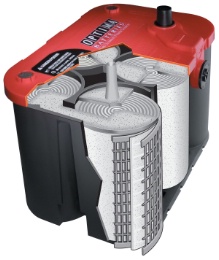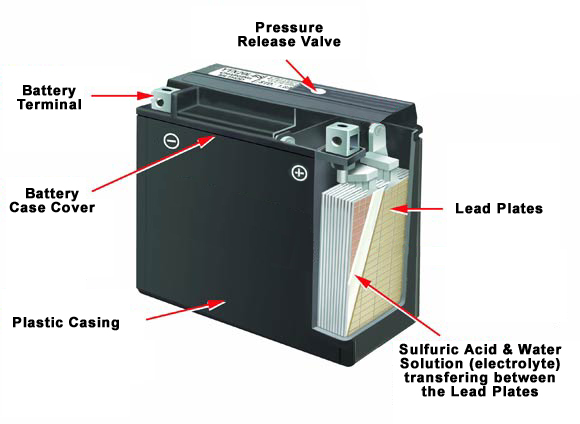Over the past few years, advances have been made in automotive battery technology that should be considered the next time you are in the market for a battery. Spiral or orbital cell batteries from manufacturers like Exide and Optima seem to offer many benefits over conventional wet cell lead-acid batteries. We were intrigued enough by this technology to install an Exide Select Orbital in our truck. Before we get into the benefits of this new technology, let’s compare the internals of the new spiral cell units to that of traditional wet cell batteries.
The traditional wet cell battery has been around since the dawn of the automotive age and are in service in all but a tiny percentage of the cars and trucks on the road today. In the cutaway image (below), you’ll see that it contains rectangular lead/calcium alloy plates running in parallel. These plates are suspended in a corrosive electrolyte composed of sulfuric acid and water. If you shake one of these batteries, you can hear the electrolyte sloshing around. If tip one of these batteries over, the acid will leak out of the vent or filler caps. A good quality wet cell battery will last about 3 to 5 years depending on the severity of its service.
As you can see in the cutaway image of this Optima battery (below), its design is a considerably different. High purity lead plates are tightly wound into 6 spiral cells. This cell design delivers twice the surface area of conventional rectangular cell configurations. As the plates are wound, they separated with an absorbent fiberglass matting material. This material performs two tasks. First, it lowers internal resistance. Secondly, it completely absorbs the electrolyte like a sponge. This means that the battery will never leak, even in the event of a puncture or impact. Couple this with the fact that the battery casing is completely sealed and has no vent. Gases are recycled within the sealed design, so the battery will not vent noxious gases. Spiral cell battery posts will never corrode and the owner never has to add water. They can be mounted or stored sideways and can be safely used in the interior of the car. They will even work after the case has been broken.





